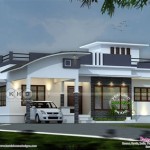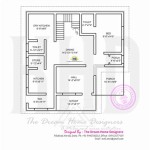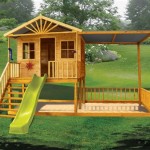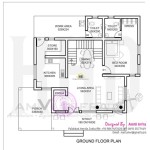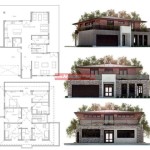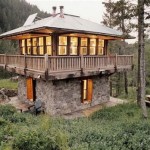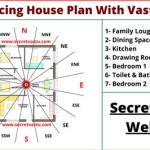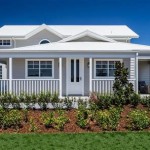Lake Cabin Designs and Floor Plans: Maximizing Comfort and Functionality
Lake cabins represent a retreat from the everyday, a sanctuary where nature's beauty and tranquility take center stage. Designing a lake cabin, however, requires careful consideration of both aesthetic appeal and practical functionality. The floor plan is the very foundation of a successful lake cabin design, dictating the flow of space, the accessibility of amenities, and the overall livability of the structure. Effective planning ensures the cabin caters to its intended purpose, whether it be a weekend escape for a small family or a spacious gathering place for larger groups.
The unique environment surrounding a lake imposes its own set of design constraints and opportunities. Exposure to the elements, proximity to water, and the desire to integrate with the natural landscape all influence the ideal floor plan. Choosing the right design involves balancing these factors with the needs and preferences of the cabin owners.
Key Point 1: Prioritizing Views and Natural Light
One of the primary goals of a lake cabin is to maximize the connection with the surrounding natural environment, particularly the views of the lake itself. Floor plans should prioritize orienting living spaces, such as the living room, dining area, and bedrooms, towards the water. Large windows, sliding glass doors, and strategically placed decks or porches become essential elements. These architectural features not only frame the landscape but also allow for ample natural light, reducing the need for artificial illumination during the day and creating a bright and airy atmosphere.
Consider the direction of sunlight throughout the day when planning window placement. East-facing windows will capture the morning sun, while west-facing windows can provide stunning sunset views. However, west-facing windows may also require shading devices, such as overhangs or blinds, to prevent excessive heat gain in the afternoon. South-facing windows, on the other hand, offer the best opportunity for passive solar heating during the winter months, provided they are properly shaded in the summer.
The concept of "view corridors" is crucial in lake cabin design. This involves carefully planning the layout to ensure that occupants have unobstructed views of the lake from various points within the cabin. This may require positioning supporting walls or interior features in a way that doesn't impede the line of sight. Open floor plans often facilitate better view corridors than more compartmentalized designs.
Beyond the immediate view of the lake, consider incorporating other natural elements into the design. Views of surrounding forests, mountains, or gardens can enhance the overall ambiance of the cabin. Strategically placed mirrors can also be used to reflect light and views, creating a sense of spaciousness and connection with the outdoors.
Key Point 2: Optimizing for Outdoor Living
Lake cabins are intrinsically linked to outdoor activities. The floor plan should seamlessly transition between indoor and outdoor spaces, encouraging occupants to spend time enjoying the natural surroundings. Decks, patios, porches, and screened-in areas become extensions of the living space, providing areas for relaxing, dining, grilling, and socializing.
The location and size of outdoor spaces are crucial considerations. A deck or patio directly off the living room or dining area provides easy access and encourages spontaneous outdoor activities. A screened-in porch can offer protection from insects while still allowing for airflow and enjoying the views. Consider the prevailing winds and sun exposure when planning the orientation of outdoor spaces to maximize comfort.
Outdoor kitchens or grilling areas can further enhance the outdoor living experience. These spaces should be conveniently located near the main kitchen and dining area, allowing for easy food preparation and serving. Consider incorporating features such as a built-in grill, countertop space, and storage for outdoor cooking equipment.
Access to the lake itself is another important factor. If the cabin is located directly on the waterfront, consider incorporating a dock or boat launch into the design. Outdoor showers can be helpful for rinsing off after swimming or boating, and storage areas for water sports equipment can keep the cabin uncluttered.
Fire pits or outdoor fireplaces can extend the usability of outdoor spaces into the cooler months. These features provide a gathering place for evening relaxation and socializing, creating a cozy and inviting atmosphere.
Key Point 3: Addressing Practical Considerations and Storage Needs
While aesthetics and views are important, a lake cabin floor plan must also address practical considerations and storage needs. Cabins often experience heavy use, particularly during peak seasons, so durable materials and easy-to-clean surfaces are essential. Additionally, lake cabins often require more storage space than traditional homes due to the need to store outdoor gear, sporting equipment, and seasonal clothing.
Mudrooms or entry areas are crucial for containing dirt and moisture that can be tracked into the cabin. These areas should be located near the main entrance and include features such as durable flooring, storage for shoes and outerwear, and a place to hang wet towels. A laundry room is also a necessity, especially for families who spend extended periods at the lake.
Adequate storage is essential for keeping the cabin organized and clutter-free. Consider incorporating built-in storage solutions, such as shelving, cabinets, and drawers, throughout the cabin. Attics, basements, and garages can also provide valuable storage space. Outdoor storage sheds or garages can be used to store boats, kayaks, and other large recreational items.
Heating and cooling systems should be appropriate for the climate and the level of use the cabin will receive. Consider energy-efficient options, such as geothermal heating or solar panels, to reduce energy consumption and lower utility bills. Proper insulation is also crucial for maintaining a comfortable temperature and minimizing energy costs.
Water and sewage systems should be carefully planned, especially in areas where municipal services are not available. Septic systems must be properly sized and maintained to prevent environmental problems. Consider installing low-flow toilets and showerheads to conserve water.
Accessibility is another important consideration, particularly if the cabin will be used by elderly or disabled individuals. Consider incorporating features such as ramps, grab bars, and wider doorways to make the cabin more accessible to everyone.
Durability should inform material choices throughout the cabin. Hardwood or tile floors are more resistant to wear and tear than carpet, especially in high-traffic areas. Durable siding materials, such as cedar or fiber cement, can withstand the elements and require less maintenance than other options.
Flexibility: the floor plan should be flexible enough to adapt to changing needs over time. Consider incorporating multi-purpose spaces that can be used for different activities, such as a guest room that can also serve as a home office or a playroom.
Finally, lake cabin designs must be compliant with local building codes and regulations. These codes may address issues such as setbacks from the lake, height restrictions, and septic system requirements. It is important to consult with local authorities and obtain the necessary permits before starting any construction project.

Small 3 Bedroom Lake Cabin With Open And Screened Porch

Lake House Designs And More Blog Eplans Com

Lake House Designs And More Blog Eplans Com

2 Story Rustic Lake House Plan By Max Fulbright Designs Plans Floor
Lake House Plans Blog Homeplans Com

Small Bungalow Cottage House Plan With Porches And Photos

Lake House Designs And More Blog Eplans Com

Small Cabin Floor Plan 3 Bedroom By Max Fulbright Designs Plans

Small House Plan Tiny Cottage Home Or Guest 800 Sq Ft

Narrow Lot House Plan For Lake Lots Max Fulbright Designs Plans Cottage

